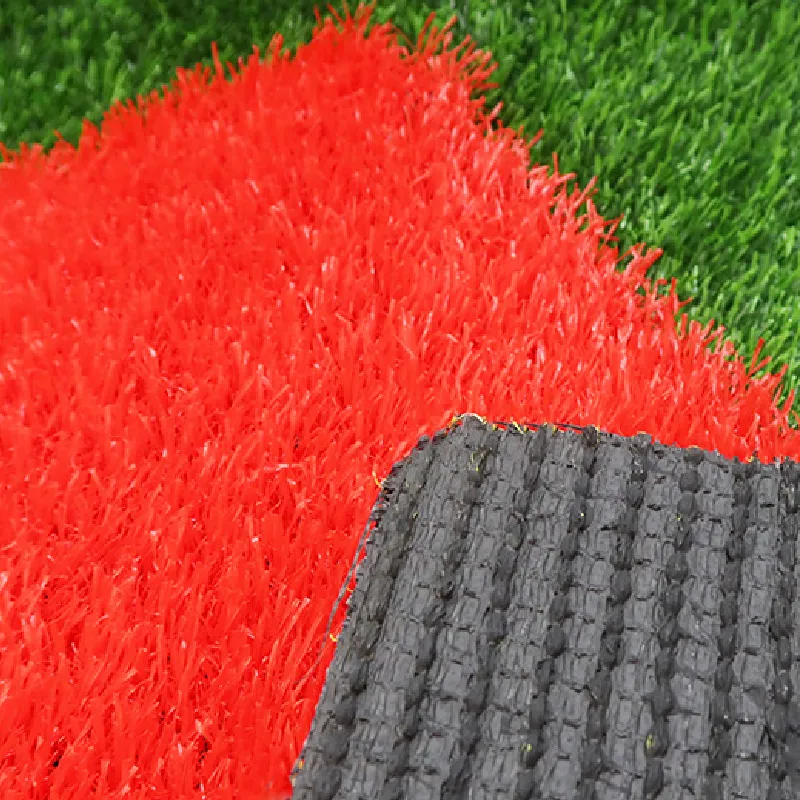
- Afrikaans
- Arabic
- Belarusian
- Bengali
- Czech
- Danish
- Dutch
- English
- Esperanto
- Estonian
- Finnish
- French
- German
- Greek
- Hindi
- Hungarian
- Icelandic
- Indonesian
- irish
- Italian
- Japanese
- kazakh
- Rwandese
- Korean
- Kyrgyz
- Lao
- Latin
- Latvian
- Malay
- Mongolian
- Myanmar
- Norwegian
- Persian
- Polish
- Portuguese
- Romanian
- Russian
- Serbian
- Spanish
- Swedish
- Tagalog
- Tajik
- Thai
- Turkish
- Turkmen
- Ukrainian
- Urdu
- Uighur
- Uzbek
- Vietnamese
Cost Analysis for Installing Artificial Turf on Football Fields
Nov . 09, 2024 12:01 Back to list
The Cost of Artificial Grass for Football Fields
Artificial grass has revolutionized the way we think about sports fields, particularly in football. With its ability to withstand heavy use, minimal maintenance requirements, and the aesthetic appeal it provides, many football organizations are turning to synthetic turf as a viable alternative to natural grass. However, the decision to install artificial grass comes with substantial financial considerations that warrant a thorough examination.
The initial cost of installing artificial grass can be significant, typically ranging from $5 to $15 per square foot, depending on various factors such as the quality of the turf, the complexity of the installation, and additional features like drainage systems or shock-absorbing underlays. For a standard football field that measures approximately 57,600 square feet, the total cost can range from $288,000 to $864,000. This price range can be daunting for schools and local communities looking to create or upgrade their sports facilities. Therefore, it is essential to analyze the long-term benefits and savings that artificial grass can provide.
While the upfront investment is considerable, artificial turf often proves to be more cost-effective over time. One of the primary factors contributing to long-term savings is the reduction in maintenance costs. Natural grass fields require regular upkeep, including mowing, watering, fertilizing, and pest control—expenses that can quickly add up. In contrast, synthetic turf requires significantly less maintenance, primarily involving brushing to keep the fibers upright and occasional cleaning. According to some estimates, maintenance costs for natural grass can range from $20,000 to $30,000 annually, whereas artificial turf maintenance costs can be as low as $5,000 per year. This difference results in substantial savings over the lifespan of the field, which is typically 10 to 15 years.
cost of artificial grass for football field

Another financial consideration is the number of playable hours. Natural grass fields can become worn and unusable after heavy rain or extensive play, limiting the available time for practices and games. Artificial turf is designed to handle much higher levels of foot traffic, often accommodating multiple games and practices in a single day without degradation. This increased usability can translate into higher revenue for organizations, as more events can be hosted.
Additionally, artificial grass can provide safety benefits that might reduce liability costs for organizations. The consistent surface of synthetic turf can help prevent injuries related to uneven ground conditions. Some artificial turf fields also incorporate advanced shock-absorbing technologies that reduce the impact on players' joints, potentially lowering the risk of injuries. Fewer injuries can lead to reduced insurance premiums and liability claims, further adding to the cost-effectiveness of the investment.
Communities and organizations must also consider funding options when weighing the costs of artificial grass. Grants, sponsorships, and partnerships can help offset initial expenses. In many cases, the long-term savings and potential revenue generation from increased usage can justify the investment.
In conclusion, while the upfront cost of artificial grass for football fields can be substantial, the long-term savings in maintenance, increased usability, and potential safety benefits create a compelling case for its installation. Investing in synthetic turf can lead to a more sustainable, reliable, and profitable sporting environment, providing community members with high-quality facilities for years to come. As organizations continue to evaluate their options, the economic advantages of artificial grass may ultimately lead to its widespread adoption in football and other sports.
-
The Benefits of Artificial Turf for Indoors
NewsJul.15,2025
-
How Artificial Grass Suppliers Ensure Quality Products
NewsJul.15,2025
-
Artificial Grass and Pets: A Space for Relaxation
NewsJul.08,2025
-
Balcony & Outdoor Decoration with Artificial Grass
NewsJul.08,2025
-
Best Indoor Artificial Grass for Home
NewsJul.07,2025
-
Best Pet Turf for Dogs: Safe & Durable Artificial Grass Options
NewsJul.07,2025
Products categories









